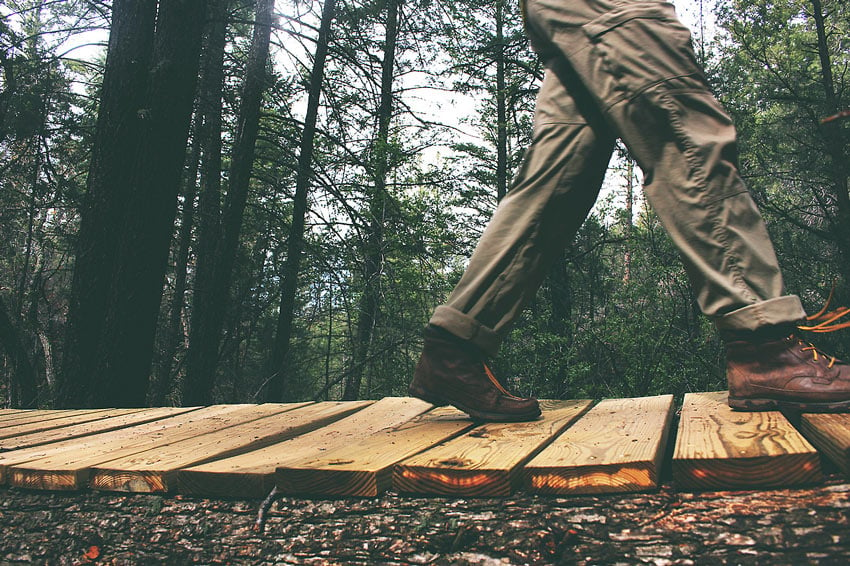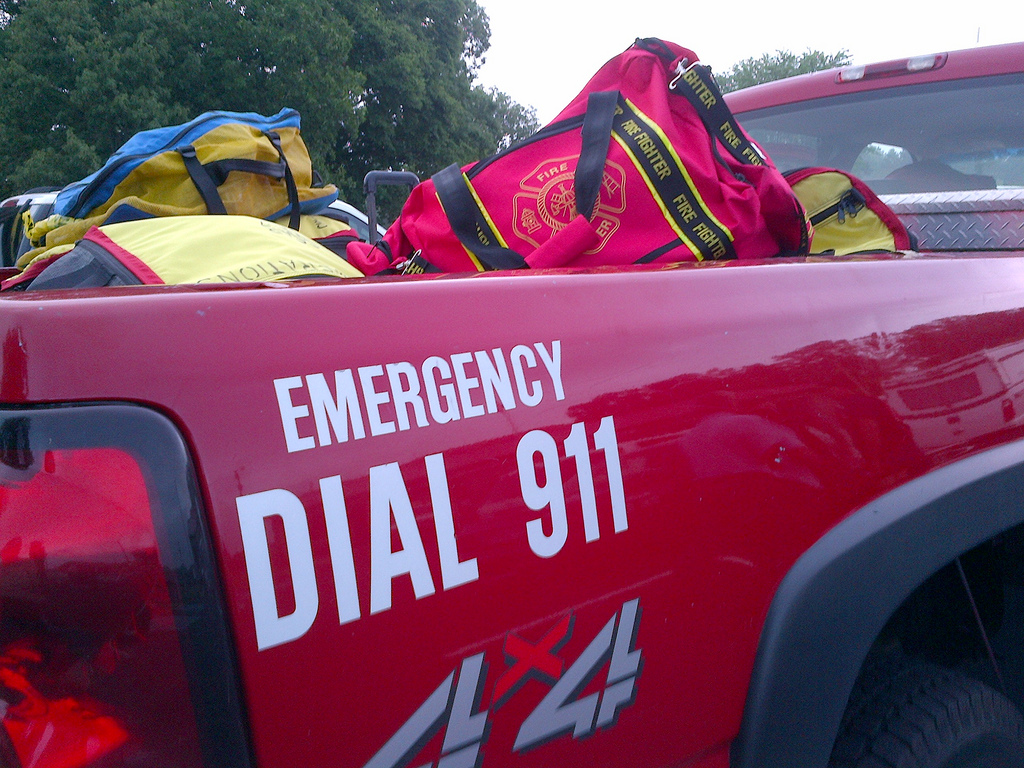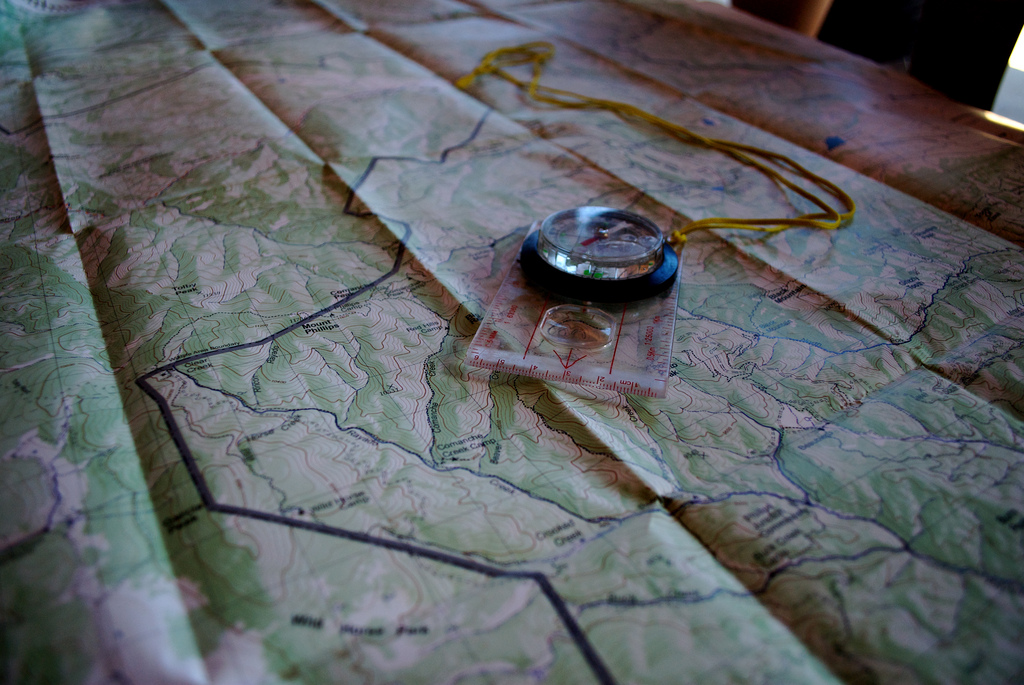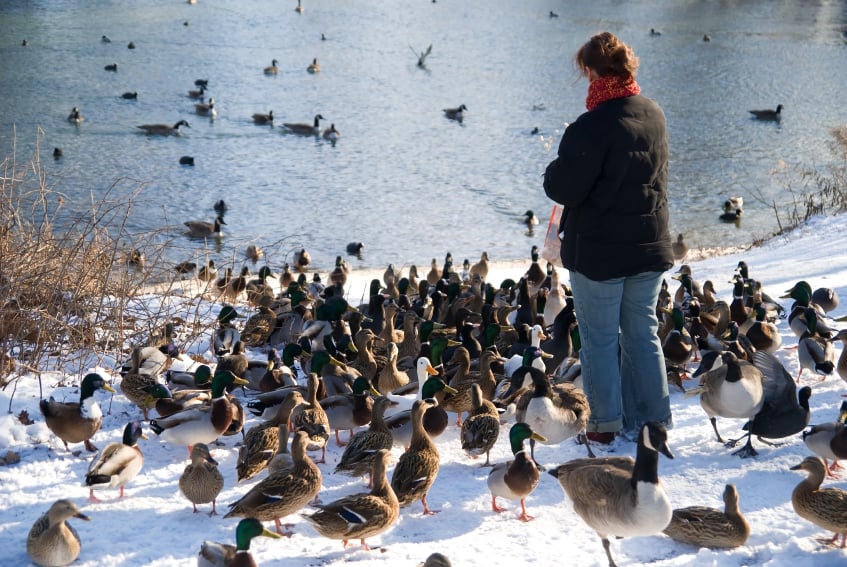The Story of a Blind Hiker, His Foray into Survival and What We Can Learn From It
The Story of a Blind Hiker, His Foray into Survival and What We Can Learn From It

The Tale Unfolds
The man had been hiking for days on the Appalachian Trail. A master ultra-light camper steadily shuffling through the Blue Ridge Mountains. Equipped like his companions, his mode of travel and perception was unique. Limited eyesight made the world a colorful blur and his thick glasses allowed him to read only when objects were inches from his face.
Despite this handicap, thousands of miles underfoot had made his movements confident and practiced. He focused on his feet and their sensation on the changing terrain. When he felt the trail’s edge he adjusted and continued on his way.
This man liked hiking alone and his companions respected that desire. Every morning they traveled ahead and welcomed him at camp every night. This sunny Friday was no different. The group pressed ahead on the last leg of their journey. The night’s rendezvous was set at a bridge some twenty miles away. The bridge was beside a small town and the last stop before flying home.
Day One – Overdue
The group waited at the bridge all night and into the next day. Maybe he took a rest along the trail? Maybe he was just moving slower than usual? There was no way he was going to miss his flight later that day. The group continued on, parted ways and headed home.
Day Three – Missing
Family, co-workers and friends became worried when the blind-hiker didn’t check-in or go to work. Family members contacted the hiking group, discovered the particulars and immediately contacted the police. The police determined that the man had never made his flight, which raised the alarm and alerted local search and rescue (SAR) personnel.

Photo © Chattahoochee-Oconee National Forest
Day Five – Missing
Search and rescue assets deployed swiftly and in force to the place last seen. Aircraft, trackers, K9 units, ground searchers, spontaneous volunteers, incident managers and investigators worked around the clock, but the environment was against them. Craggy terrain and bad weather hindered communication and search efforts.
The vast distance to be covered, along with confusing navigational points, forced searchers to slowly eliminate point after point. Camps were set up for containment and flyers were distributed. The search area was finally narrowed to 20 square miles of craggy terrain south of a critical T-intersection, when trackers found sign of a man moving off the path into the deep brush.
Day Six – Found
On a slow Saturday morning the tones dropped at a nearby fire station, alerting the firefighters that a quarter acre of national forest had spontaneously burst into flames. An engine company and brush truck were dispatched and rushed to the scene. The firefighters moved quickly to cut fire-breaks and assault the flames, when suddenly they encountered a man – haggard and worn. “We’ve been looking for you.” one of the firemen said. While the Blind Hiker’s answer is lost to history, the firefighters escorted him to an ambulance that took flight to a hospital and to safety.
The Hiker’s Notes
During the after-action review, the blind hiker was interviewed extensively and provided a detailed account of his actions. Rescuers marveled at how the man had done nearly everything right, yet had nearly everything go wrong.
The hiker estimated that only a few minutes elapsed before he realized he’d lost the trail. A false ridgeline trail had guided him astray. Feeling his way outward in several directions and attempting to retrace his steps, it became clear that he wouldn’t find the trail.

He evaluated his situation and knew his friends were experienced hikers. Surely they would realize he was overdue and call for help. His pack had enough food and water for at least 3 days if he didn’t do anything too strenuous. Thus, he formulated a plan and set to work. He found a sheltered location that was relatively flat and safe from the elements where he set up camp. He made his campsite as visible as possible by hanging bright colored clothing. On occasion he would blow three blasts from his whistle – the international SOS signal. He checked his cell phone and got no signal. Fearing that he would lose his campsite, he decided to stay put rather than try and find higher ground.
By the fifth day he had run out of food and water. He knew he was in desperate straits, as three days without water is the general rule for survival and Appalachian summers can be desperately hot. He needed to find a way out. The next day he built the biggest fire he possibly could. Unfortunately, the blaze got out of control and ultimately led to his discovery and rescue.
What Can We Learn?
Know Your Risks and Points of Failure
It’s clear that there was a well-defined hiking plan that the group stuck to. They had a routine for movement and communication. However, we also know that a few crucial “what if” questions were missed. There’s tremendous risk inherent to breaking up a hiking group, especially if a person is moving alone. Identifying potential risks and setting up contingencies when bending safety practices, is critical. A simple over-due protocol may have cut rescue time significantly. It’s said that “there are no rights or wrongs in the wilderness, only consequences.” Prevent emergencies before they happen by identifying and mitigating risk.
Get Your Mind Right
Survival is a mental game. The attitudes, behaviors and mental frameworks a person brings to difficult circumstances ultimately determines their ability to achieve the best possible outcome. The hiker in this story was blind, running low on supplies, far from home, knew that he could not affect his own escape and knew that rescue could take days. He didn’t panic, he didn’t freeze, he managed his fear, acknowledged his situation, tasked his mind to planning and took action on those plans. This ability is only developed through deliberate practice, introspection and accumulated experience. Develop mindfulness, know thy self and take opportunities to test, examine and refine how you react to stressful circumstances. In my opinion, a GORUCK Challenge is a solid start for getting used to discomfort and playing the mental game.

Photo © Kevin Gessner
Know Your Stuff – Equip Accordingly
When the right skills and equipment are combined with the right mind, a person can act in a way that generates options and opportunities. It’s also preparation for capitalizing on them. The blind hiker brought the right skills, knowledge and equipment for understanding his situation, extending his survival time and increasing his chances of rescue. He took every reasonable action for a lost person who has an expectation of rescue.
What Can Go Wrong – Will Go Wrong
Murphy tends to get the best of most arguments and events. It’s the attitude one takes to these moment that makes the difference. In the words of Robert Service, one must “cultivate a cast-iron smile of joy…and grin.” If a person can bring humor, a flexible mind and a belief in self-determination to Murphy’s tricks, they can imagine the impossible and find a way to improvise, adapt and overcome. The blind hiker was a major leave-no-trace practitioner, but made one heck of a signal fire. He found a way.
A Final Word
While certain details of this story have been omitted and gaps have been smoothed for story telling purposes, this is a true story. The Blind Hiker experienced a true accident and a life threatening emergency. He will never be charged for the thousands of man hours and complex inter-agency resources activated to find him. He will never be fined for the quarter-acre of prime National Forest his fire burnt down. The story is used herein to illustrate survival principles. Anyone who willfully places themselves into similar circumstances and utilizes such actions can and will be prosecuted for destruction of property and reckless endangerment of rescue personnel. This can result in severe fines, jail time and a criminal record. So, if you’re going to do survival training, please be responsible. Act wisely, plan appropriately and respect those who are on call to risk their lives to save yours.
Further Reading
Search and Rescue professionals are constantly working to understand the behavior of those lost or caught in survival situations. A regular on the recommended reading list is Deep Survival by Laurence Gonzales (ISBN: 978-0-393-32615-4). This book delivers the culmination of a lifetime of academic and field research in layman’s terms, reinforced by powerful storytelling. For anyone interested in what it takes to prevent accidents and survive overwhelming odds, this read is mandatory.
Editor-in-Chief’s Note: Evan Koepke is the former chairman of the Blue Ridge Mountain Rescue Group and the Appalachian Search and Rescue Conference. His training and experience includes wilderness search management, lost person behavior, sign-cutting, technical rescue and wilderness medicine. He currently works as the Operations Planning Associate for Team Rubicon, a veterans-based international disaster response organization.











Discussion